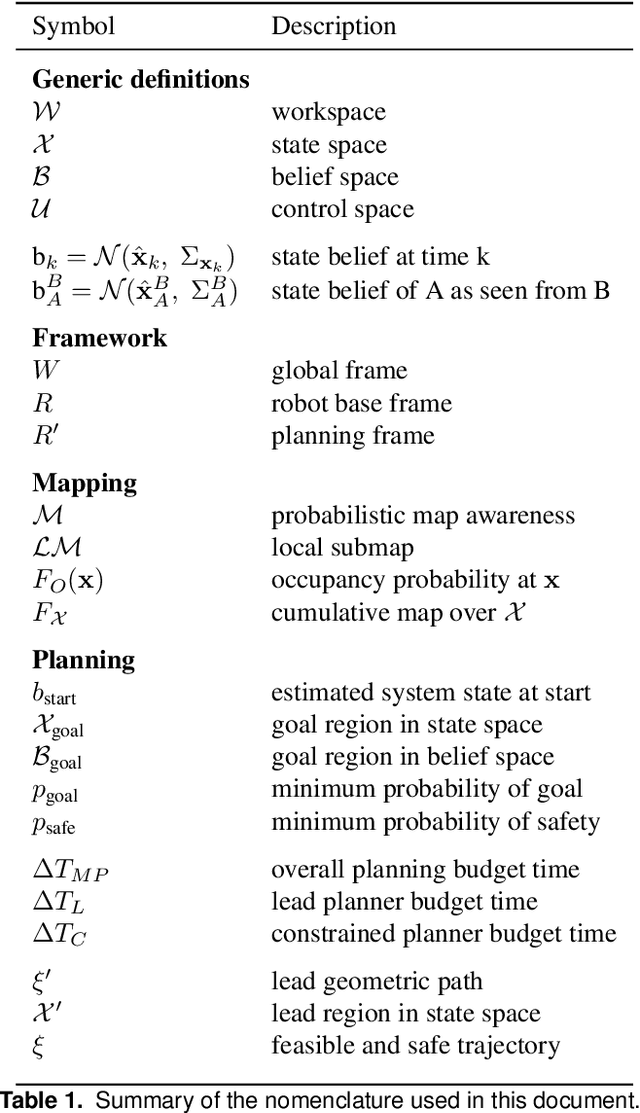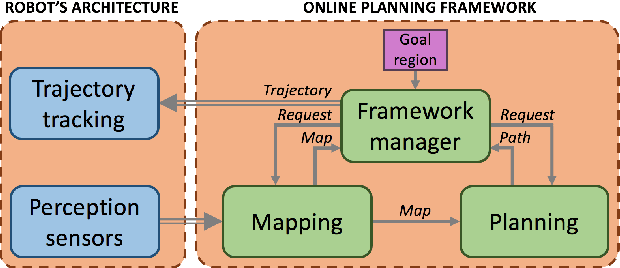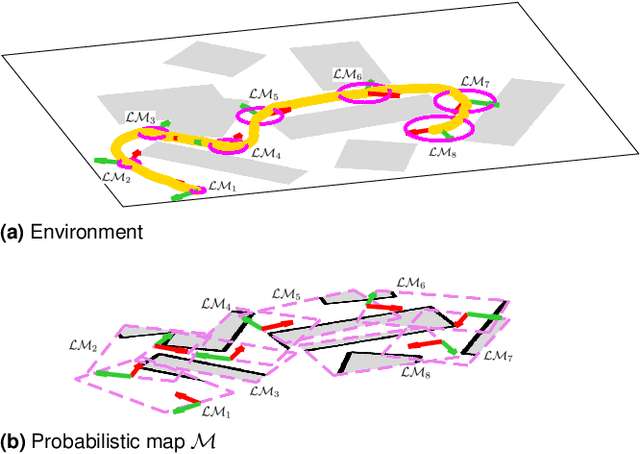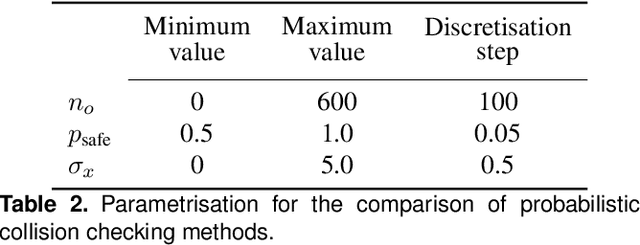Juan David Hernández
Learning to bag with a simulation-free reinforcement learning framework for robots
Oct 22, 2023Abstract:Bagging is an essential skill that humans perform in their daily activities. However, deformable objects, such as bags, are complex for robots to manipulate. This paper presents an efficient learning-based framework that enables robots to learn bagging. The novelty of this framework is its ability to perform bagging without relying on simulations. The learning process is accomplished through a reinforcement learning algorithm introduced in this work, designed to find the best grasping points of the bag based on a set of compact state representations. The framework utilizes a set of primitive actions and represents the task in five states. In our experiments, the framework reaches a 60 % and 80 % of success rate after around three hours of training in the real world when starting the bagging task from folded and unfolded, respectively. Finally, we test the trained model with two more bags of different sizes to evaluate its generalizability.
Online Mapping and Motion Planning under Uncertainty for Safe Navigation in Unknown Environments
May 26, 2020



Abstract:Safe autonomous navigation is an essential and challenging problem for robots operating in highly unstructured or completely unknown environments. Under these conditions, not only robotic systems must deal with limited localisation information, but also their manoeuvrability is constrained by their dynamics and often suffer from uncertainty. In order to cope with these constraints, this manuscript proposes an uncertainty-based framework for mapping and planning feasible motions online with probabilistic safety-guarantees. The proposed approach deals with the motion, probabilistic safety, and online computation constraints by: (i) incrementally mapping the surroundings to build an uncertainty-aware representation of the environment, and (ii) iteratively (re)planning trajectories to goal that are kinodynamically feasible and probabilistically safe through a multi-layered sampling-based planner in the belief space. In-depth empirical analyses illustrate some important properties of this approach, namely, (a) the multi-layered planning strategy enables rapid exploration of the high-dimensional belief space while preserving asymptotic optimality and completeness guarantees, and (b) the proposed routine for probabilistic collision checking results in tighter probability bounds in comparison to other uncertainty-aware planners in the literature. Furthermore, real-world in-water experimental evaluation on a non-holonomic torpedo-shaped autonomous underwater vehicle and simulated trials in the Stairwell scenario of the DARPA Subterranean Challenge 2019 on a quadrotor unmanned aerial vehicle demonstrate the efficacy of the method as well as its suitability for systems with limited on-board computational power.
 Add to Chrome
Add to Chrome Add to Firefox
Add to Firefox Add to Edge
Add to Edge